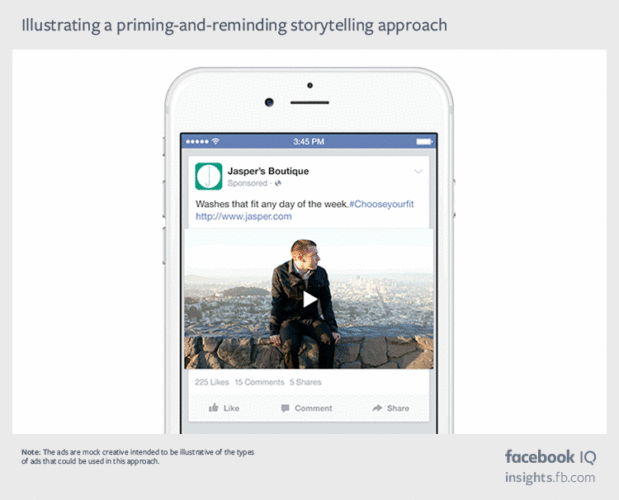Storytelling is part of the foundation of your digital brand. This aspect of your content infuses your writing with character and uniqueness that will set your brand apart from all the noise floating around in the vast space of the Internet.
Getting started with your own storytelling voice may feel complicated at first, but we’ve lined up some great steps to ease you into excellent storytelling.
Storytelling: The Building Blocks of a Great Digital Brand
Storytelling is essential to any great digital brand. Without storytelling, your content has an overwhelming about of possibility of falling flat. If your content is flat, then your audience will feel it and not come back. It will also ensure that your target audience doesn’t find your content, and if they do, will not share it with others.
Adding storytelling to your content infuses a piece of you into your articles, which provides your brand with a unique voice. People like to feel like they’re reading something new, something interesting, and something they can connect with. Storytelling makes all of those boxes checked off, plus it gives them more than they were expecting, you.
The Framework for Great Storytelling
No matter which of these stages your brand may be at, it is important to know that investing in your content infrastructure (the people, processes, and technology) can make all the difference in how consistently compelling your storytelling is to your audience.
1. The Why: Content Strategy
This is where it is important to develop a business content strategy. You’ll want to start off by asking yourself some basic questions like: What is important to your business? What are you hoping to achieve? How will your content help you to get there?
You’ll need to align the types of content that you create and invest in with what you’re hoping to see in return.
SEE ALSO: How to Create a Social Content Strategy for your Brand
2. The What: Content Operations
Your content strategy won’t be enough to stand on its own and make content swiftly, no matter how important it may be. This is where you’ll have to think about changing the way that you work in order to make your content creation more efficient.
When you develop a content operating model, it will help you to better divvy up your resources. Your content operating model will tell you what you need and how to manage the transition.
3. The Who: Content Governance
If your content doesn’t have any governance, then your content will have no manager to ensure that it’s being effective.
You can set up a responsibility matrix for your content types that will allow you to free up your sign-off process for publishing. This will give you two benefits right away. First, you’ll have a brand universe that is full of your content that has been deemed the most valuable and up-to-date. Second, you won’t have any zombie content that is clogging up your message and preventing you from having access to your best content.

4. The Where: Content Architecture
If you don’t have an effective content architecture, then you’ll find it to be a challenge trying to stay relevant across multiple platforms and channels. You’ll find this is true even if you’re using a content management system. Your content needs to be structured and intelligent to make sure that it can be read by people and machines just as easily.
This is when you’ll need to make your content management technology start to work for you. Tag your content and start creating relationships between pieces of your own content using taxonomies and ontologies. Your brand stories will be free to move where your customers are with your tags, links, and rules in place.
5. The How: Content Measurement
Once you produce your content, you might feel like you’ve made it to the end, but this is not the case. You will still need to study it’s impact, otherwise you’ll have no idea how effective your content is to your brand.
You’ll need to figure out if it answers these basic questions: Did my content communicate the right message? Did it raise brand awareness? Did it get the desired reaction from my customers?
When you measure the impact of each piece of content out, it will better help you to know what’s working and where you should be making changes.
SEE ALSO: How to Tell Your Digital Brand Story
How to Make Your Storytelling Authentic
The last thing you want for your storytelling is to sound cliche. Your brand should be full of fresh authenticity that pulls in your target audience.
There is an overload of information on the media currently, which can make it hard to achieve the results you’re looking for. You will have to go beyond buzzwords in order to create something that is new and remarkable. This is how you will draw in your target audience.
1. Tell Your Own Story
https://youtu.be/My9nFT5fIco
The last thing you want for your content is to be generic. The conventional formulas out there have already been done to death which makes them ineffective.
When you want a fresh perspective, you don’t have to go any farther than your own voice. Every human being is unique with a unique voice, and this includes you!
Behind your brand is a story of its founders and its team. This means that before you go anywhere else for great storytelling, you only need to look inward at your own brand.
What made you interested in starting your own brand? This could be the best way to start your story because it will have an interesting angle that no one else will have.
2. Play With Your Structure
While conventional stories may have a required structure of beginning, middle, and end, this does not have to always be in order when storytelling for your brand.
There have been many great works that have deviated from the traditional structure and benefitted from that decision. This is why you shouldn’t hesitate to experiment with your structure. Try going non-linear or put it in reverse. Find a structure that works for you regardless of its conventionality.
… there’s a simple structure we see in most stories — hero, conflict, resolution. But the place where value and valuation is created is between conflict and resolution. What this means: great storytellers are in the business of describing big conflicts and big challenges that affect lots of people. Why: because that’s what gives value/valuation to the resolution.
Sometimes something as simple as a change of order can make your story look new, fresh, and more authentic.
3. Be Quirky
Being eccentric can make you look weird, but you can also come across as interesting and exceptional. You want to show your target audience who you are and really some them your unique characteristics in how you present yourself.
Being brave and showcasing the real you can lead to more interesting storytelling in your brand that can really benefit you in the long run.
4. Target the Raw Emotions
A universal fact of humanity is that nothing connects with the human heart like genuine emotions. Your target audience is always looking for emotions that they can connect to and root for, even in this era of machines.
You want to make sure that your story is evoking the right emotion to make sure that your audience won’t require any additional convincing after it’s been told. Evoking an emotional response will leave your target audience feeling like they’ve had an authentic experience and will leave a strong imprint on their minds.
5. Develop a Brand Identity
A flat personality will never be engaging. However, you don’t need to be righteous or immaculate to garner attention.
Your storytelling needs to develop an identity that is human, full of qualities and flaws. Having a realistic personality will be more relatable and give more authenticity to your story. Drawing from people you know and your own persona can help to build up your brand.
6. Add Humor
Humor is something that is guaranteed to always work. Your humor can be sublime, shocking, or slapstick, it all depends on the type of brand you want. It is also important to know what your audience wants.
Be sure to not show signs of desperation by repeating the same jokes that someone else has already forwarded on other social sites like Whatsapp. Create your own memorable humor that isn’t just a copy.
7. Keep the Curiosity
Adding a little bit of suspense to your brand is something that always works. This formula may not be new, but it is still guaranteed to work. It is also the most enduring and popular element in storytelling. Without curiosity and suspense, there is no story.

You don’t want to just give away all your information at once. Instead, you should keep people guessing. Building curiosity also creates conversation starters which will give your audience the opportunity to discuss your brand and spread your story further out into the internet.
SEE ALSO: Establish Product-Story Fit
Final Thoughts
Your storytelling is how you can put yourself out there in your content. It will fill your content with a richness that is only possible when you truly know your brand and put your heart and soul into it. Don’t be afraid to show your own personality in your content, that is what your target audience is looking for!
However, remember not to give all your information away at once. Your brand will need to find the perfect balance of coyness and openness to make your storytelling really bring your brand to life and generate interest.
How have you found ways to generate compelling storytelling in your content?











